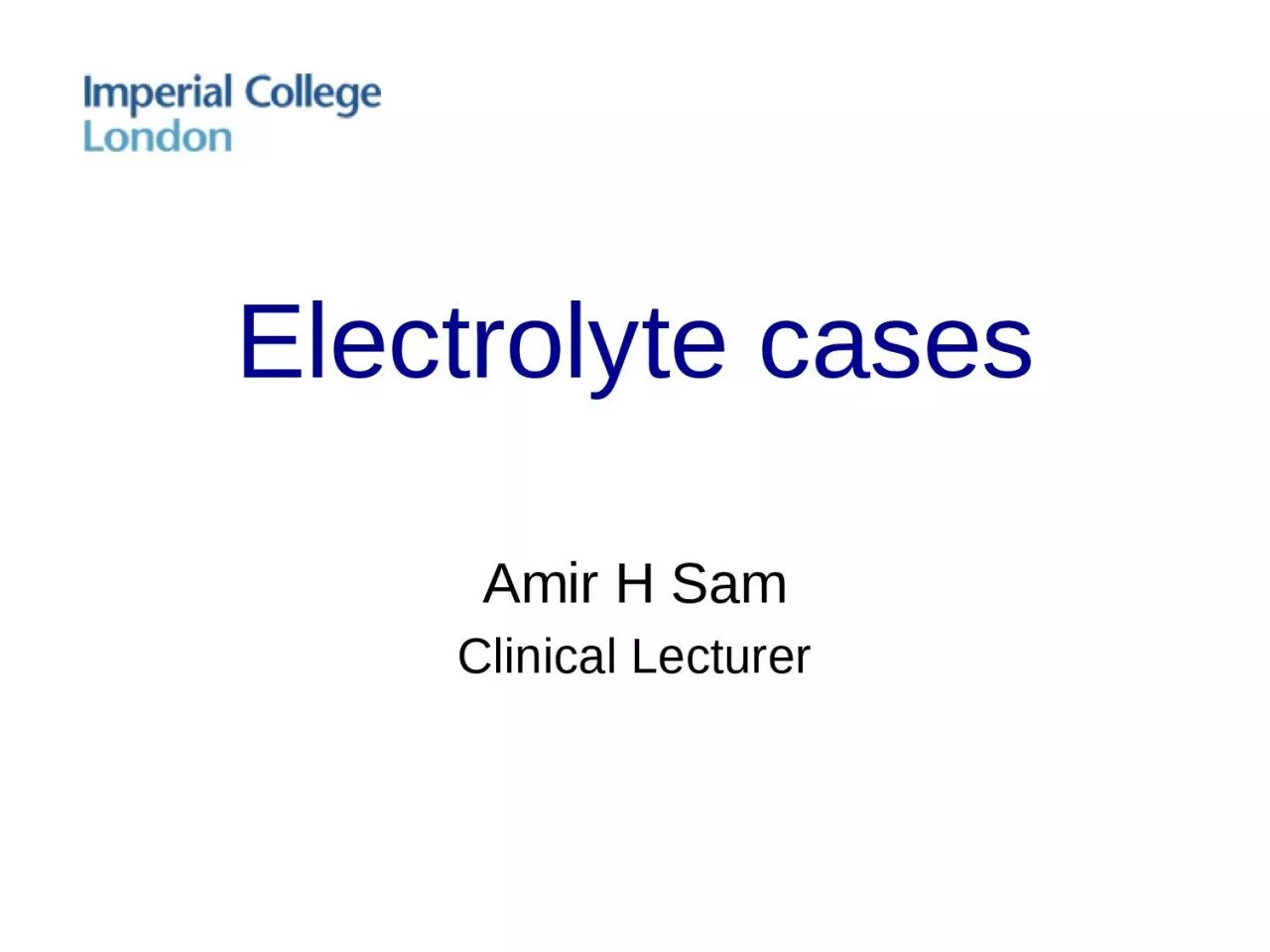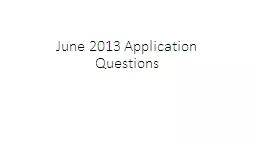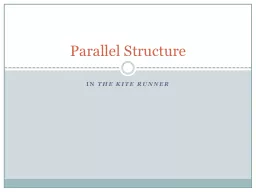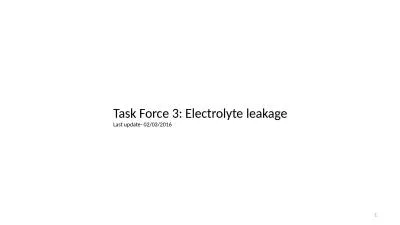PPT-Electrolyte cases Amir H
Author : riley | Published Date : 2024-03-13
Sam Clinical Lecturer Learning objectives To interpret the clinical data in patients with serum electrolyte abnormalities To plan the investigations and management
Presentation Embed Code
Download Presentation
Download Presentation The PPT/PDF document "Electrolyte cases Amir H" is the property of its rightful owner. Permission is granted to download and print the materials on this website for personal, non-commercial use only, and to display it on your personal computer provided you do not modify the materials and that you retain all copyright notices contained in the materials. By downloading content from our website, you accept the terms of this agreement.
Electrolyte cases Amir H: Transcript
Download Rules Of Document
"Electrolyte cases Amir H"The content belongs to its owner. You may download and print it for personal use, without modification, and keep all copyright notices. By downloading, you agree to these terms.
Related Documents














